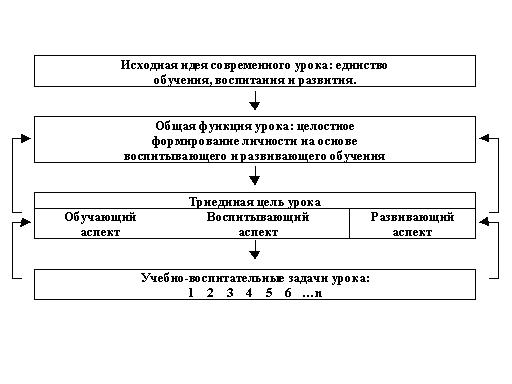You will need
- A program of an object
Instruction
1
Remember the requirements for the statement of purpose:
The goal should be
a) clearly defined;
b) to understand;
C) achievable;
g) check;
d) specific.
Therefore, the objectives "to study the subject "Angiosperms", "to deepen knowledge on the subject" is not specific, not check, not having clear criteria for achievement. And the goal is to find representatives of flowering plants, study of their distinctive characteristics" - clear, concrete, achievable, and verifiable.
The goal should be
a) clearly defined;
b) to understand;
C) achievable;
g) check;
d) specific.
Therefore, the objectives "to study the subject "Angiosperms", "to deepen knowledge on the subject" is not specific, not check, not having clear criteria for achievement. And the goal is to find representatives of flowering plants, study of their distinctive characteristics" - clear, concrete, achievable, and verifiable.
2
Specify the purpose for parts. Proceeding from modern ideas about the structure of the lesson, its goal is triune in nature, consists of three interrelated aspects: cognitive, developmental and nurturing. The cognitive component. Remember that the didactic purpose there are the following types of lessons (B. P. Esipov, N. I. Boldyrev, G. I. Shchukin, V. A. Onischuk, and others):
- lesson introduce new material;
lesson reinforce;
- lesson application of knowledge and skills;
lesson of generalization and systematization of knowledge;
- the lesson of verification and correction of knowledge and skills;
- a combined lesson.
Based on the type of lesson, formulate the goal. When the lesson involves the formation of students new concepts and ways of actions, the system of scientific knowledge, it can be formulated in the following way:
- to help students learn the law, characteristics, properties, features ...;
- to generalize and systematize knowledge about ...;
- practice skills (specify what);
- to eliminate gaps in knowledge;
- to make students mastering of concepts (what?).
In formulating objectives, you can use the verbs "to see", "learn", "fix", "apply", "write", "sketch", "teach", "lock", "secure", "articulate," "control," "prepare," "to tell", etc. In the classroom-the generalization of the use of the word "allocate", "to summarize", "update". On a practical lessonx - "apply knowledge", "make", "to promote the formation of skills, the ability to handle...", etc.
- lesson introduce new material;
lesson reinforce;
- lesson application of knowledge and skills;
lesson of generalization and systematization of knowledge;
- the lesson of verification and correction of knowledge and skills;
- a combined lesson.
Based on the type of lesson, formulate the goal. When the lesson involves the formation of students new concepts and ways of actions, the system of scientific knowledge, it can be formulated in the following way:
- to help students learn the law, characteristics, properties, features ...;
- to generalize and systematize knowledge about ...;
- practice skills (specify what);
- to eliminate gaps in knowledge;
- to make students mastering of concepts (what?).
In formulating objectives, you can use the verbs "to see", "learn", "fix", "apply", "write", "sketch", "teach", "lock", "secure", "articulate," "control," "prepare," "to tell", etc. In the classroom-the generalization of the use of the word "allocate", "to summarize", "update". On a practical lessonx - "apply knowledge", "make", "to promote the formation of skills, the ability to handle...", etc.

3
Educational component goal. Here the common mistake is to attribute to each lesson new developmental function. But the problem is that the development is not as fast as tuition, and the pace of development of each child. Therefore, the educational component may be repeated from lesson to lesson, and even be one in the whole topic. I don't think any teacher will have an opportunity after the lesson to check how develop memory and analytical abilities of the child/class. Therefore, the wording of subparagraph goal begins with the words "to create conditions for the development of ...", "contribute ..." (logical thinking, memory, observation, the ability to summarize data and draw conclusions, compare, ability to plan and use it, etc.)
4
The educational component goal. In each lesson the teacher needs to have educational impact, and education, as well as the development passes in one lesson. It is impossible to check by the end of the lesson will be formed certain personality traits. Therefore, the teacher also can create only the conditions for education, for example, feelings of humanism, collectivism, respect for elders, mutual responsiveness, a negative attitude towards harmful habits, values, physical health, etc. Again, the wording "to create (or provide)...". Then, in summing up, you can check achieved the goal or not, were applied the techniques that create the conditions for the formation of certain qualities of character and personality traits.
Useful advice
Students also need to know what goals are set before the lesson - they also learn how to formulate goals and track the results of their work.

